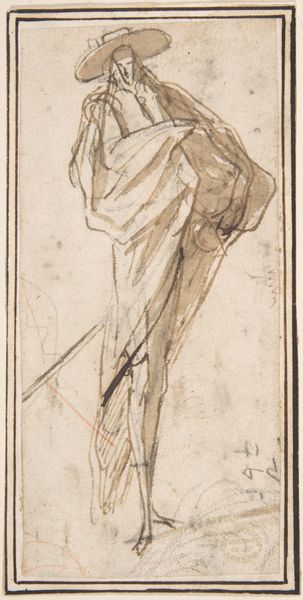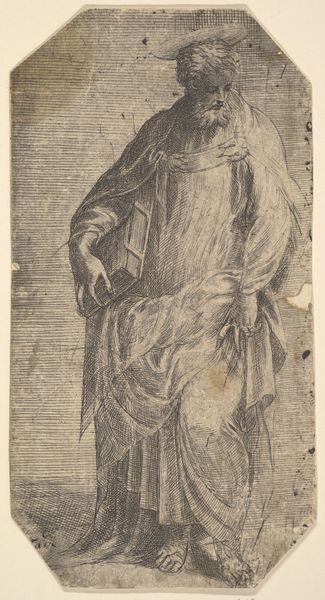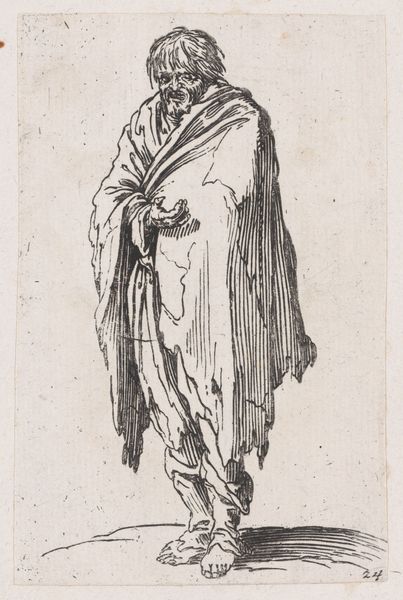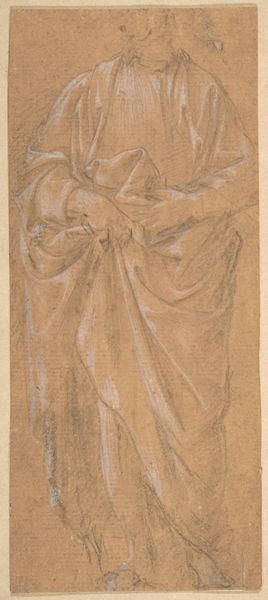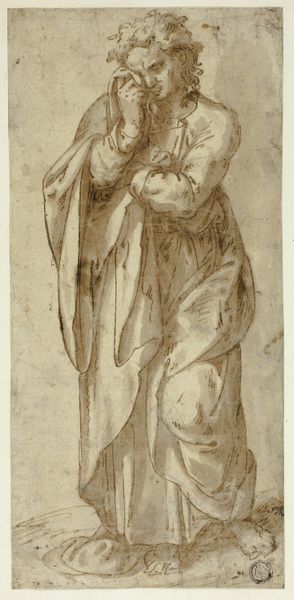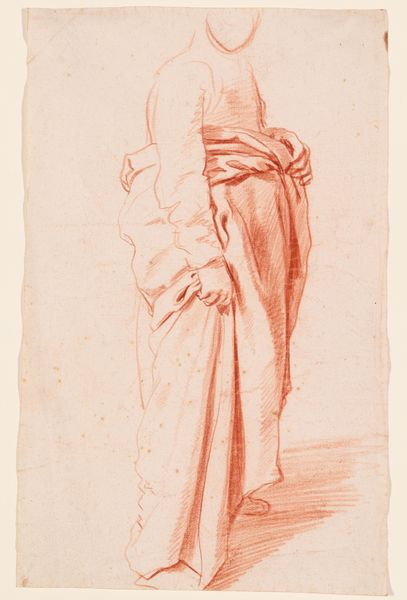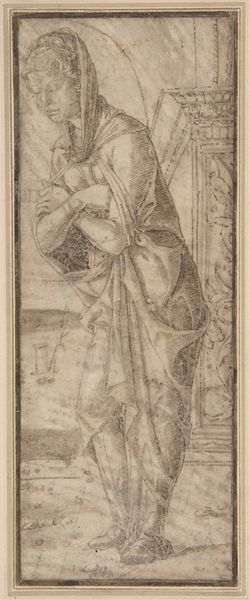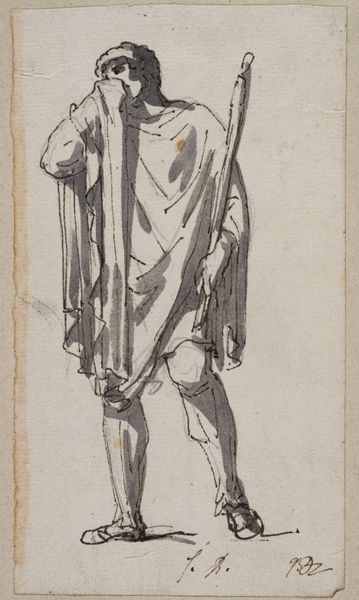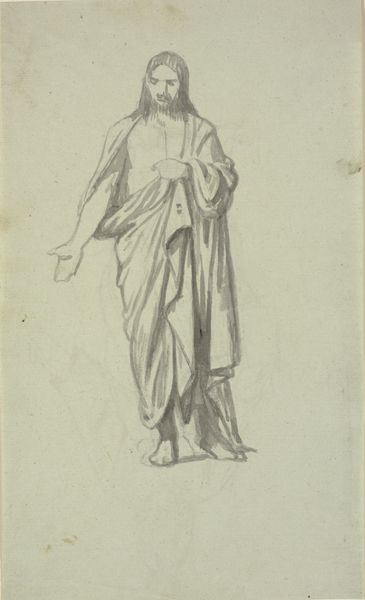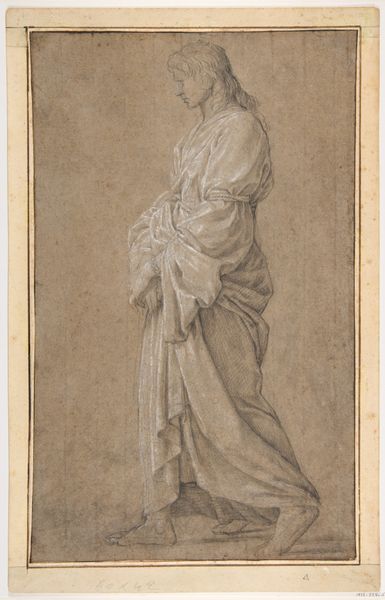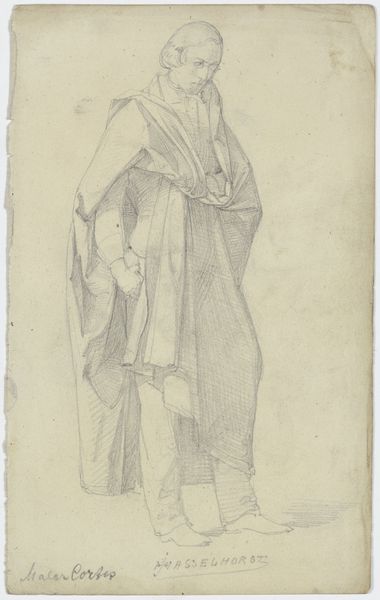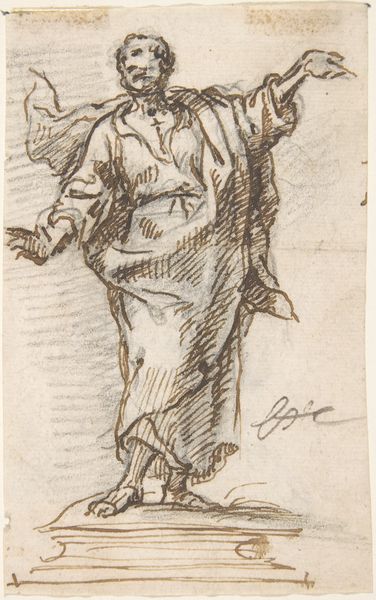
drawing, print, paper, ink
#
drawing
#
baroque
#
ink painting
# print
#
pencil sketch
#
figuration
#
paper
#
ink
#
history-painting
Dimensions: sheet: 7 1/16 x 3 3/8 in. (17.9 x 8.6 cm)
Copyright: Public Domain
Curator: The Metropolitan Museum of Art houses this 17th-century ink drawing, entitled "Statue of a Draped Female Figure," rendered anonymously. Editor: The quick washes give a surprisingly statuesque quality to the figure, almost monumental despite the sketchiness. Curator: Observe how the artist utilizes shadow to sculpt form. Note, in particular, how the draping folds both conceal and reveal, creating visual interest through their play of light and dark. The figure almost emerges from the ground through a structural definition rooted in contrapposto. Editor: Absolutely. The drape almost seems secondary to the underlying structure of the figure. And I keep being drawn to the hands - poised in an almost imploring way. Are they invoking a classical idea, like supplication or revelation? Is there a historical connection here, beyond a generic representation of 'woman'? Curator: Given its era, a study of this kind would reflect that rising interest in the depiction of emotional realism that's typical for Baroque figure work. But also it can simply be read as an effective exercise in anatomical study and surface textures, a fundamental element for crafting monumental artworks, with balanced compositions and clear visual hierarchies. Editor: I agree, however, those upturned, beseeching hands and her melancholic gaze pull me toward its emotive power and cultural weight beyond the simple execution of form, which makes this piece stand out as it reminds me of penitent sculptures of the era. It evokes strong connotations, making me reflect on broader themes. Curator: I appreciate your observations and would suggest the visual dialogue resides at the junction of both aspects: Formal artistic intention and emotive potential co-create our aesthetic experience, allowing the artistic spirit of an era to exist. Editor: Perhaps seeing that kind of interplay makes our interpretations richer and more valuable as well, because it's a reminder of why artworks still feel relevant even after many generations.
Comments
No comments
Be the first to comment and join the conversation on the ultimate creative platform.
